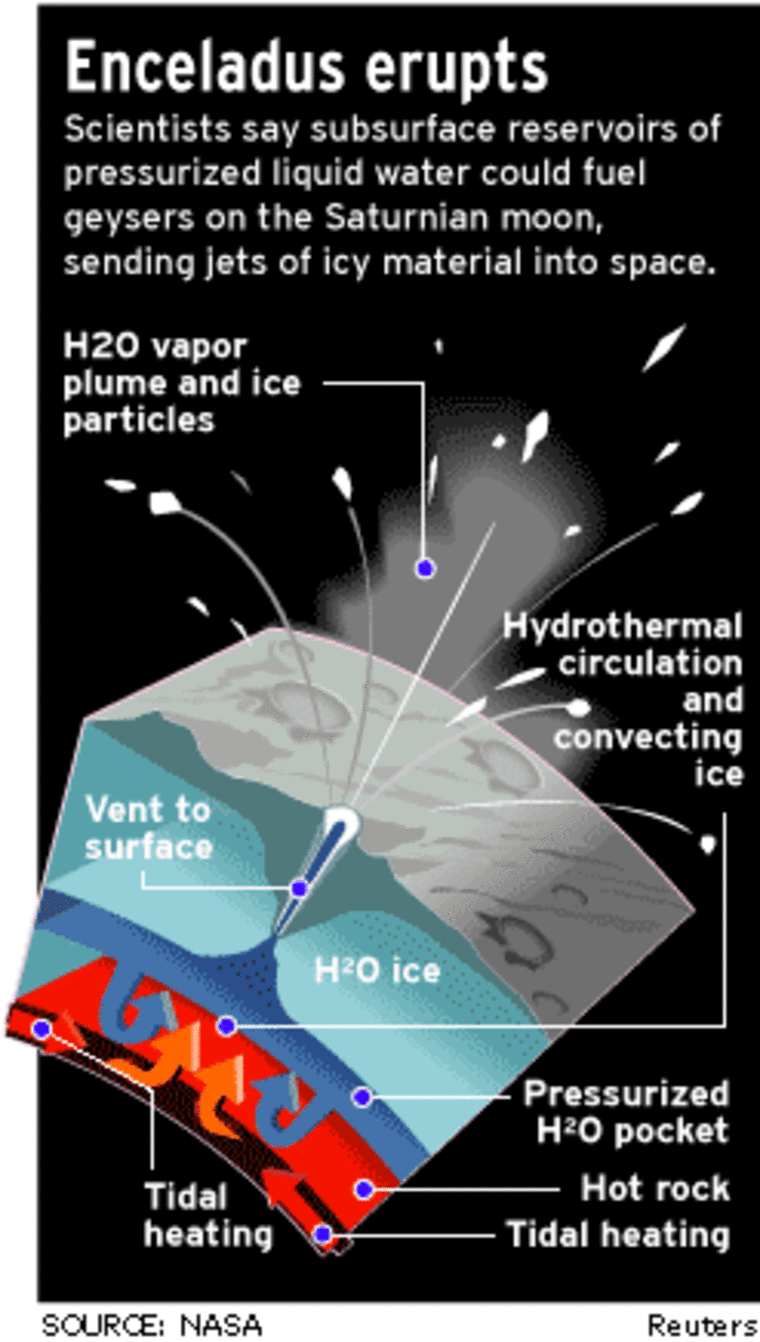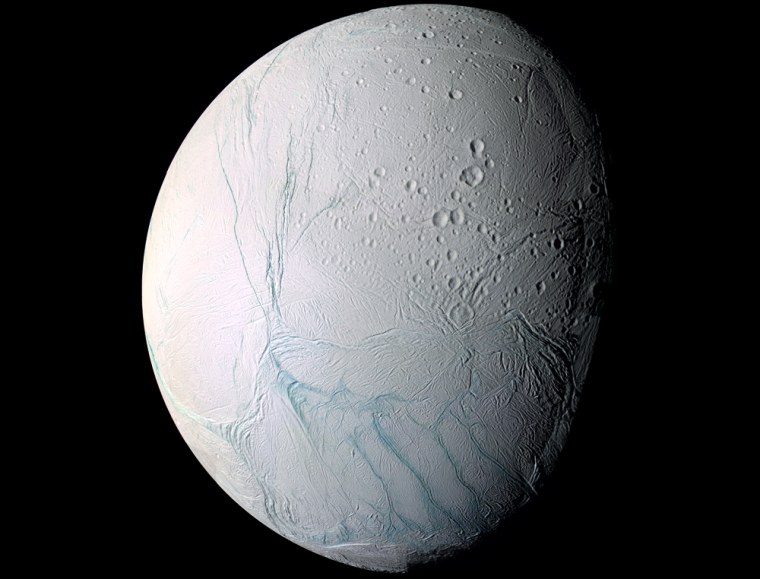Saturn's moon Enceladus contains a large body of water under its surface, new research has confirmed. And the icy moon may even have conditions suitable for life.
Data from NASA's Cassini spacecraft revealed negatively charged water molecules in the moon's atmosphere.
"While it's no surprise that there is water there, these short-lived ions are extra evidence for subsurface water and where there’s water, carbon and energy, some of the major ingredients for life are present," said Andrew Coates from University College London's Mullard Space Science Laboratory.
This news comes after NASA's Cassini Equinox mission made low passes over Saturn's moon Enceladus in 2008 and 2009. Using an instrument called a plasma spectrometer, elements in the plumes of gas and dust ejected by the moon's geysers could be measured and identified.
Now that the analysis has been completed, it appears the space probe has collected evidence for negatively charged water ions and negatively charged hydrocarbons. (Negatively charged water ions can be found in familiar places on the surface of Earth, near waterfalls and breaking ocean waves for example.)
This means that this small moon contains the basic ingredients for life, and due to the presence of the negative ions in Enceladus' plume, there appears to be ongoing processes that could provide a suitable environment for life to evolve under the surface.

Negative ions have only been discovered on a select few bodies in the solar system including the Earth, comets and another one of Saturn's moons, Titan.
In fact, the same plasma spectrometer on board Cassini has been used to confirm the presence of large negative hydrocarbon ions high in the atmosphere of Titan, indicating the presence of an organic mix of chemicals called "tholins" on Titan's surface.
The continuing discoveries of other possible prebiotic environments in the solar system are showing us that the Earth may not be the only place where such conditions can exist.
